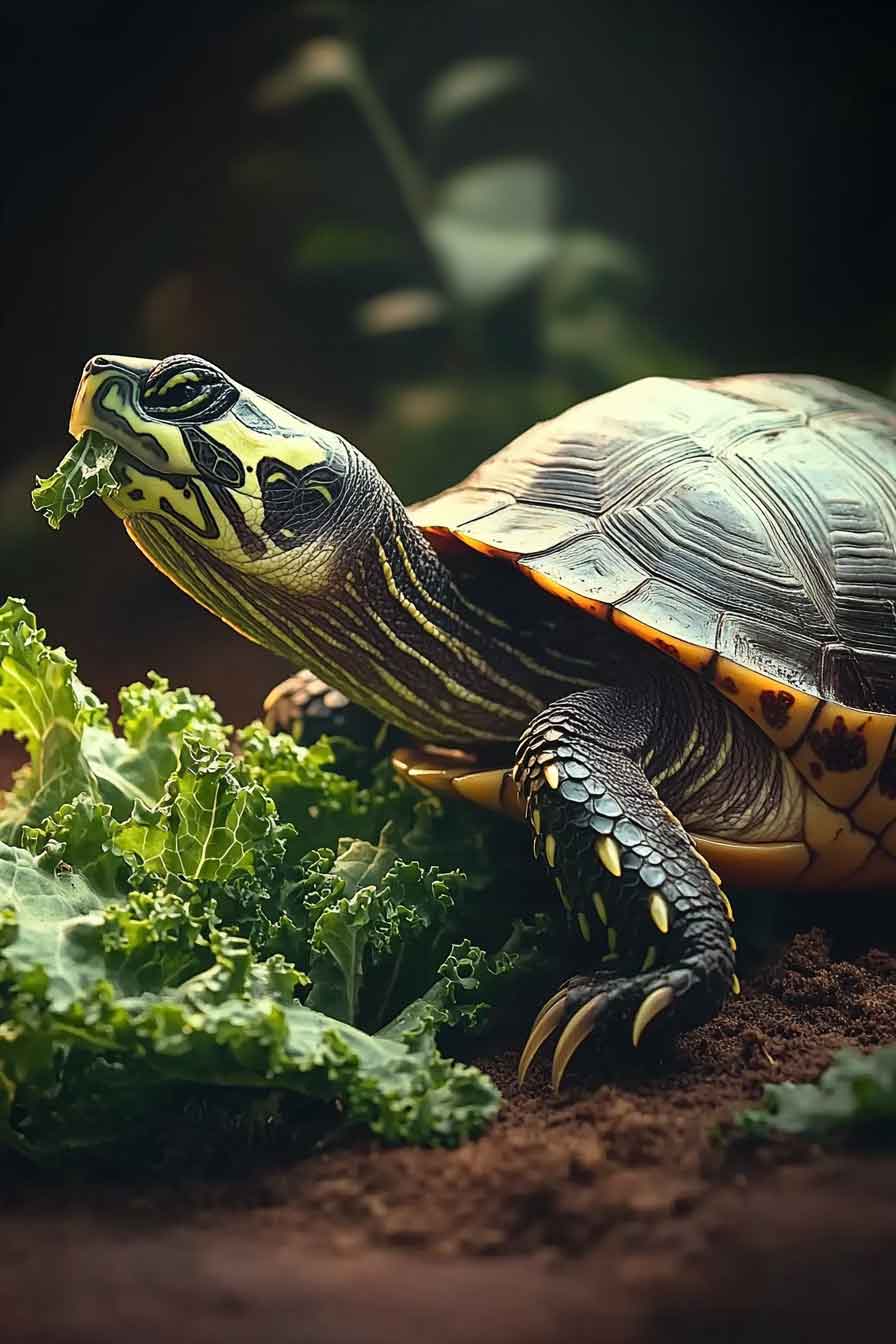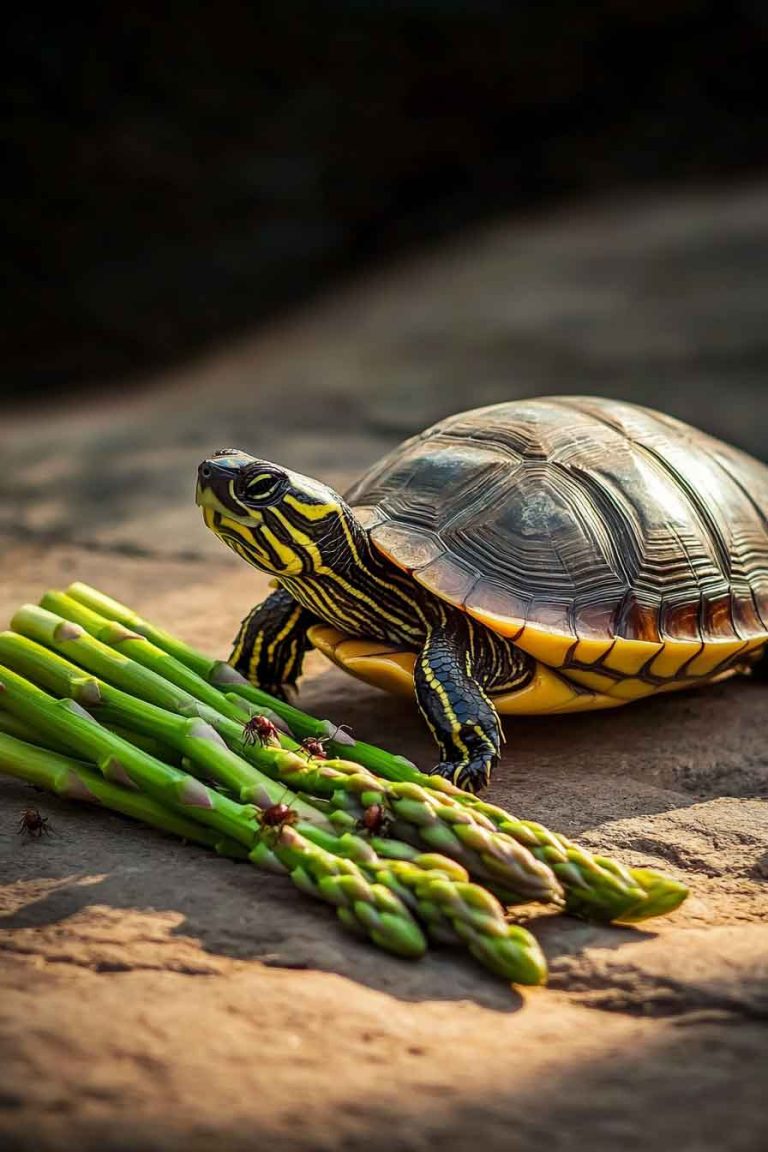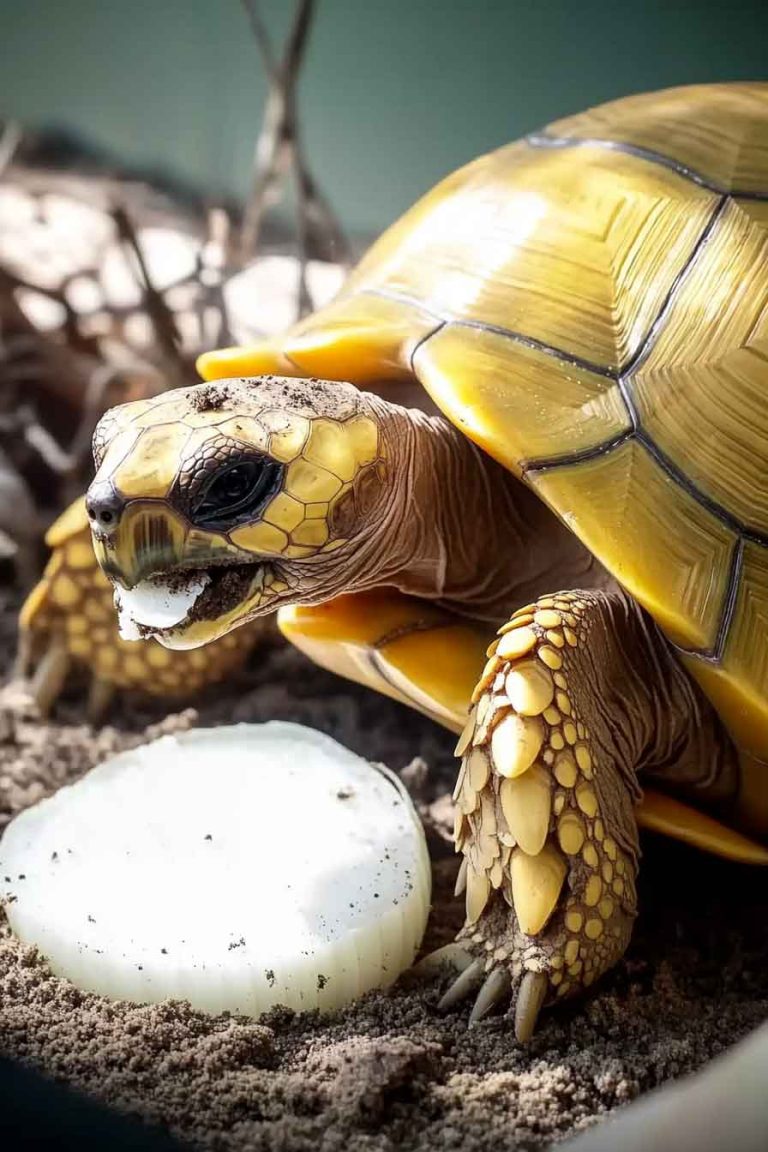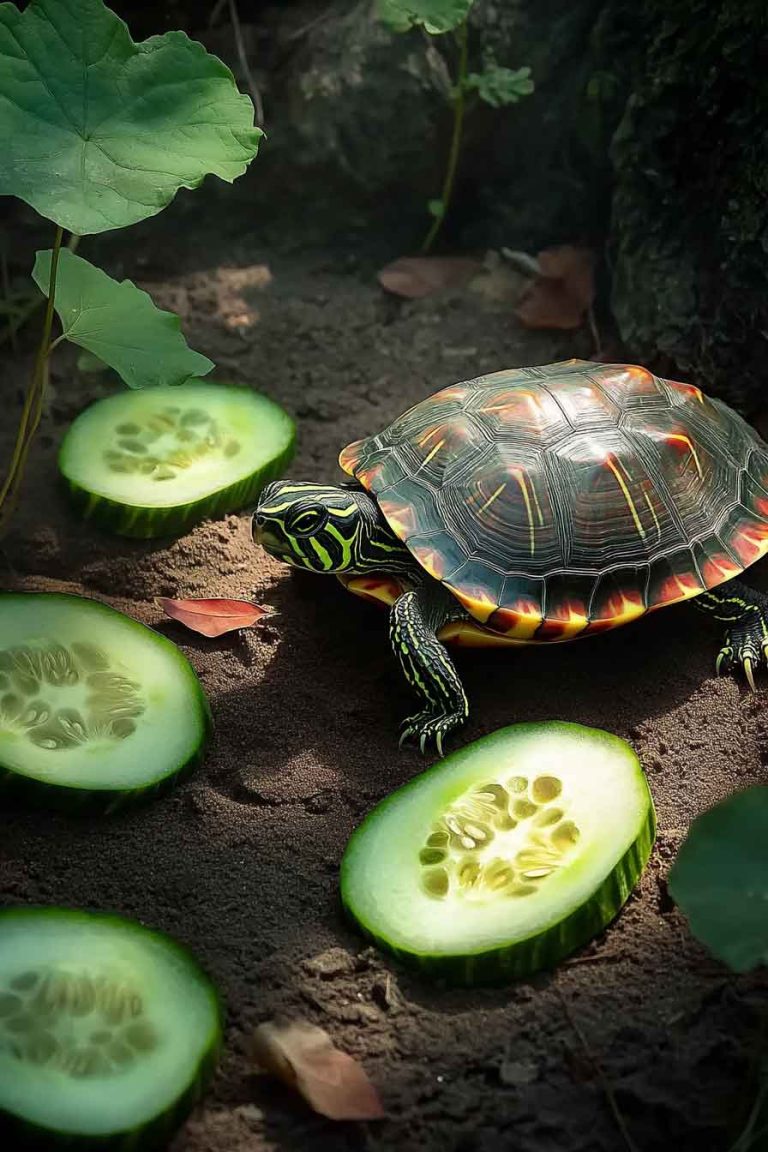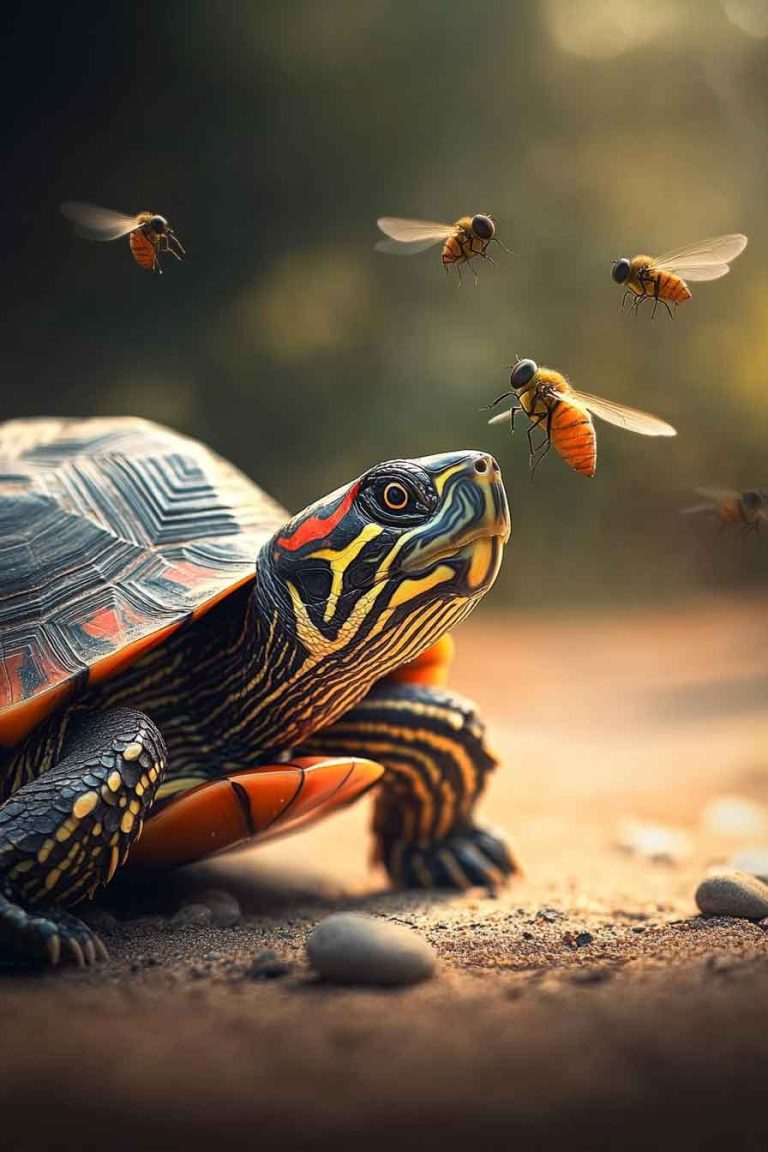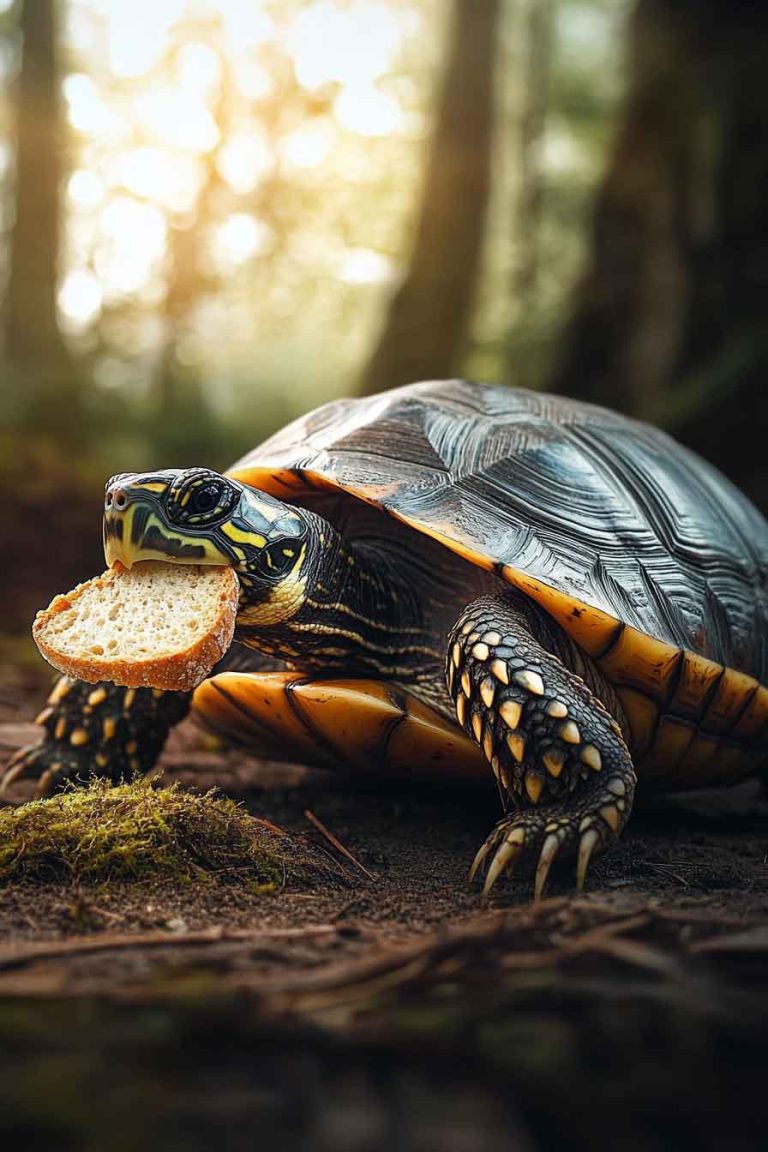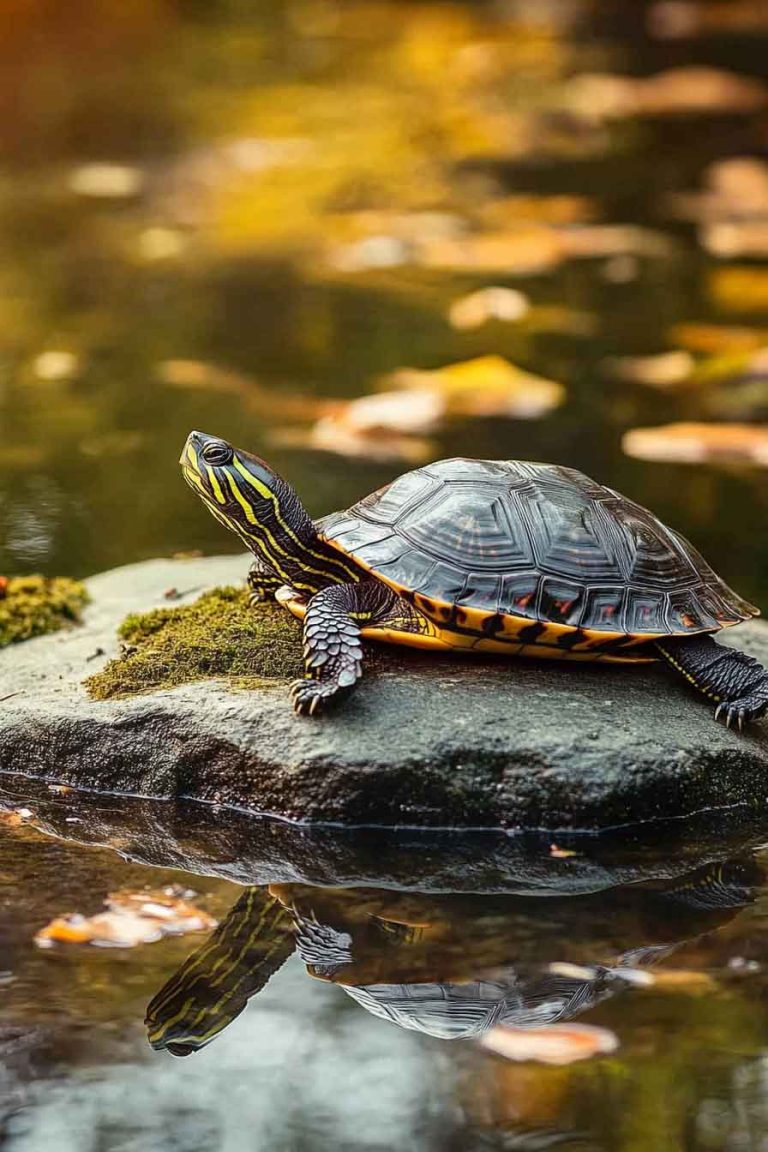Can Turtles Eat Kale? What Every Owner Must Know
If you’re like me and have a pet turtle, I’m sure you’ve wondered about sharing some of your healthy greens with your shelled friend. Kale has become incredibly popular as a superfood for humans, and it’s natural to wonder if our turtle companions can benefit from this nutritious leafy green too. So, can turtles eat…
If you’re like me and have a pet turtle, I’m sure you’ve wondered about sharing some of your healthy greens with your shelled friend. Kale has become incredibly popular as a superfood for humans, and it’s natural to wonder if our turtle companions can benefit from this nutritious leafy green too.
So, can turtles eat kale? The answer is yes – turtles can eat kale, but with important considerations. Kale can be a beneficial addition to your turtle’s diet when fed in moderation and prepared properly. However, like many foods, there are both benefits and risks I need to share with you to ensure your turtle stays healthy and happy.
In this article, I’m going to walk you through everything you need to know about feeding kale to your turtle. We’ll explore the nutritional benefits, potential risks, proper preparation methods, and feeding guidelines. Keep reading if you want to make informed decisions about your turtle’s diet.
Can You Feed Kale To Your Pet Turtle?
The short answer is – yes, but with caution. Since kale is a leafy green vegetable, many turtle owners automatically assume it’s perfectly safe to feed to their pets. While kale does offer several nutritional benefits for turtles, I want you to understand that it should be given as part of a balanced diet, not as a primary food source.
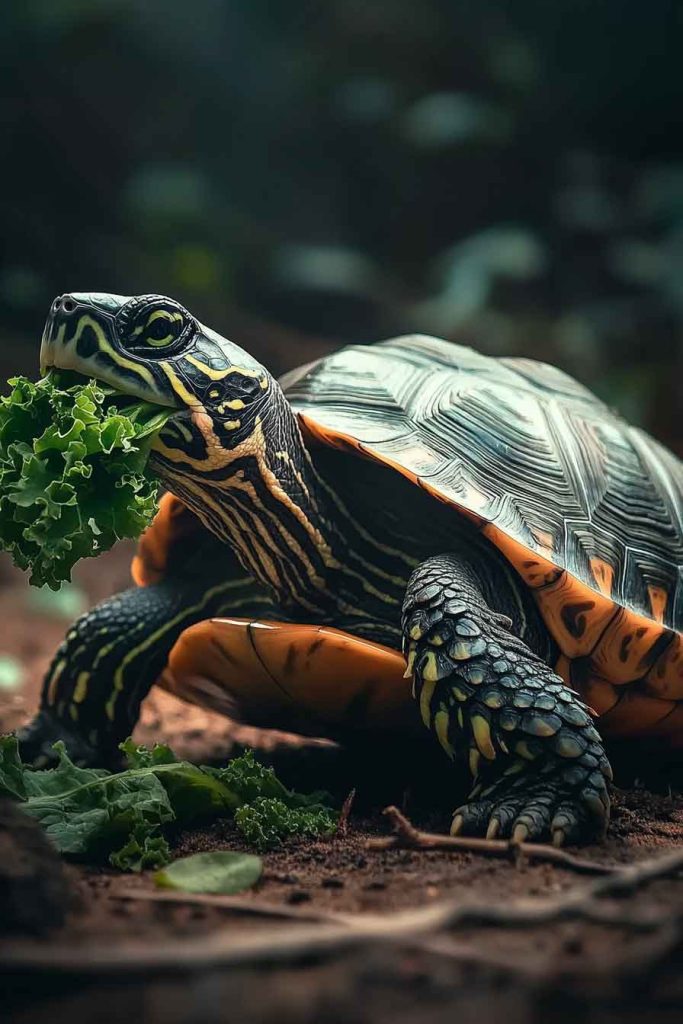
Turtles have specific dietary requirements that vary depending on their species, age, and natural habitat. Before I dive into the specifics of kale, let me share the nutritional breakdown of this leafy green so you can understand what your turtle would be consuming.
Here’s what you’ll find in 100 grams of raw kale:
- Carbohydrates: 8.75 g
- Sugar: 2.26 g
- Protein: 4.28 g
- Calcium: 150 mg
- Phosphorus: 92 mg
- Vitamin A: 9990 IU
- Vitamin C: 120 mg
- Vitamin K: 704.8 mcg
- Iron: 1.47 mg
- Magnesium: 47 mg
- Potassium: 491 mg
- Folate: 141 mcg
Looking at this nutritional profile, I can see why kale might be appealing as turtle food. The calcium content is impressive, and the calcium-to-phosphorus ratio is favorable at roughly 1.6:1, which is closer to the ideal 2:1 ratio that turtles need.
However, I need to point out some concerns. Kale contains high levels of oxalates and goitrogens, which can cause problems if fed excessively. The vitamin K content is also extremely high, which while beneficial in small amounts, can be problematic in large quantities.
Do Turtles Like Kale?
In my experience observing turtle behavior, most turtles do enjoy kale when it’s offered to them. The texture and taste seem appealing to many species, particularly those that are naturally herbivorous or omnivorous.
I’ve noticed that turtles often show interest in the darker, more nutrient-dense parts of kale leaves. However, just because your turtle likes something doesn’t mean it should become a dietary staple. Think of kale as you would a treat or supplement – beneficial in moderation but potentially harmful in excess.
Health Benefits of Kale for Turtles
When fed appropriately, kale can offer several health benefits for your turtle. Let me break down the key advantages:
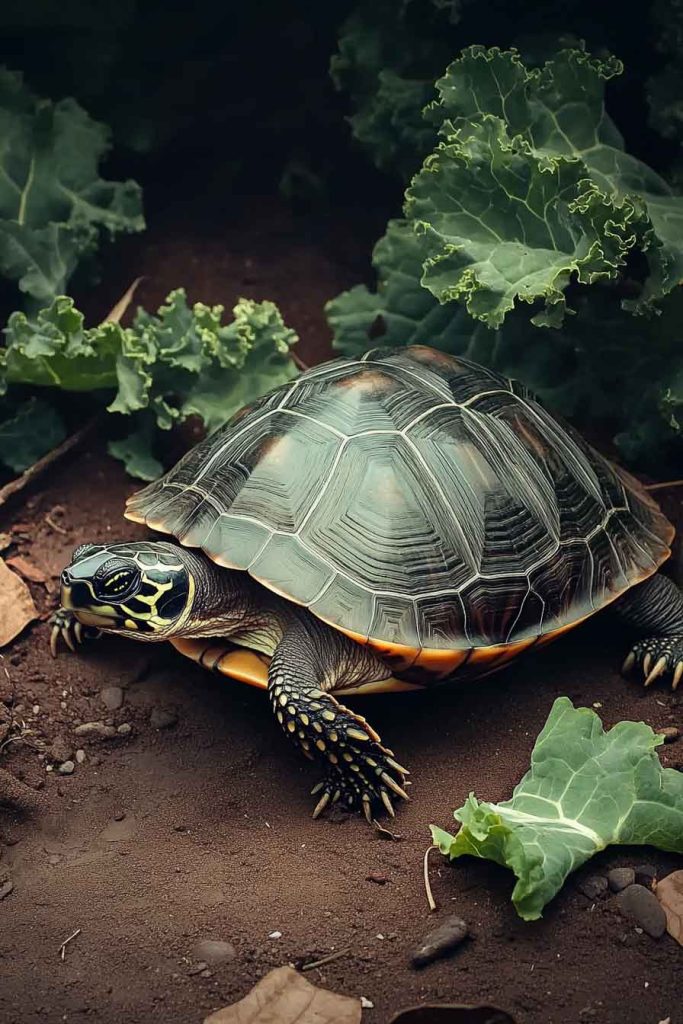
Excellent Calcium Source
One of the most significant benefits I can share about kale is its calcium content. With 150 mg of calcium per 100 grams, kale provides essential minerals for shell development and bone health. This is particularly important for growing turtles and egg-laying females who have higher calcium requirements.
The calcium in kale is relatively bioavailable, meaning your turtle’s body can actually use it effectively. This makes kale a valuable addition to prevent metabolic bone disease and shell deformities.
Rich in Vitamin A
Kale is packed with vitamin A in the form of beta-carotene. This vitamin is crucial for your turtle’s eye health, immune system function, and proper cell development. Vitamin A deficiency is common in captive turtles, so including kale in their diet can help prevent this issue.
I particularly recommend kale for turtles that show signs of respiratory infections or eye problems, as adequate vitamin A supports recovery and prevention of these conditions.
Antioxidant Properties
The antioxidants in kale, including vitamin C and various phytonutrients, help protect your turtle’s cells from damage. While turtles don’t require vitamin C in their diet like humans do, these antioxidants still provide valuable health benefits by supporting overall wellness and longevity.
Fiber for Digestive Health
Kale provides dietary fiber that can help maintain healthy digestion in your turtle. This is especially beneficial for species that naturally consume a lot of plant matter, as it helps keep their digestive system functioning properly.
Health Risks of Kale for Turtles
While kale offers benefits, I need to be honest about the potential risks. Understanding these will help you make informed decisions about feeding kale to your turtle.
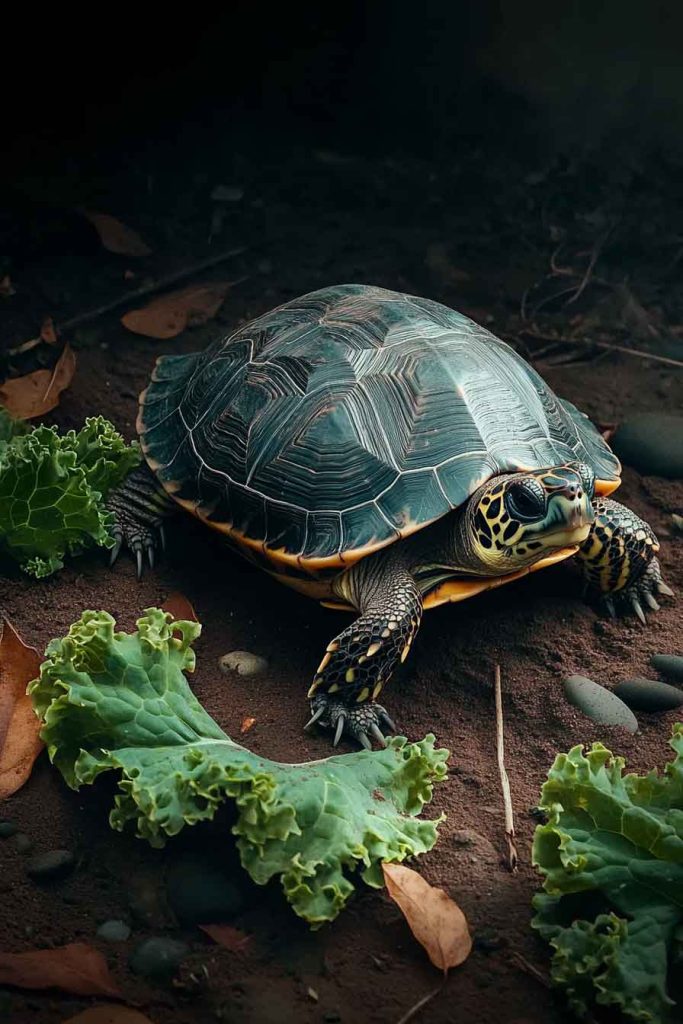
Oxalate Content
My biggest concern with feeding kale to turtles is its oxalate content. Oxalates are natural compounds that can bind with calcium in your turtle’s digestive system, making the calcium unavailable for absorption. This essentially negates one of kale’s main benefits.
High oxalate intake over time can also contribute to kidney stone formation and kidney damage. This is why I always stress moderation when recommending kale for turtles.
Goitrogens and Thyroid Issues
Kale contains goitrogens, which are compounds that can interfere with thyroid function. In large quantities, these compounds can lead to thyroid problems and metabolic issues in your turtle.
While occasional kale consumption is unlikely to cause thyroid problems, regular heavy feeding could potentially lead to complications over time.
Digestive Upset
Some turtles may experience digestive issues when first introduced to kale or when fed too much at once. I’ve seen cases where turtles developed diarrhea or showed signs of stomach discomfort after consuming large amounts of kale.
Calcium-Phosphorus Imbalance
While kale has a better calcium-to-phosphorus ratio than many vegetables, it’s still not the ideal 2:1 ratio that turtles need. If kale makes up too large a portion of your turtle’s diet, it could contribute to calcium deficiency over time.
How Much Kale Should Turtles Eat?
Based on my research and experience, I recommend limiting kale to no more than 10-15% of your turtle’s total vegetable intake. For most adult turtles, this means offering kale once or twice per week in small portions.
Here are my specific guidelines:
- Adult turtles: 1-2 small leaves per week
- Juvenile turtles: Half a leaf once per week
- Baby turtles: Small pieces occasionally (see specific guidelines below)
Remember, variety is key in turtle nutrition. I always recommend rotating between different leafy greens like dandelion greens, collard greens, mustard greens, and others to provide a well-rounded diet.
Can You Feed Kale to Baby Turtles?
I’m often asked about feeding kale to baby turtles, and my answer is: proceed with extra caution. Baby turtles have more sensitive digestive systems and different nutritional needs than adults.
For baby turtles, I recommend:
- Waiting until they’re at least 3-4 months old before introducing kale
- Starting with tiny amounts (just a few small pieces)
- Monitoring closely for any digestive issues
- Limiting to once every 10-14 days maximum
Baby turtles need more protein in their diet compared to adults, so vegetables like kale should make up an even smaller percentage of their overall food intake.
Proper Preparation of Kale for Turtles
How you prepare kale for your turtle matters just as much as how much you feed. Here’s my step-by-step preparation guide:
Washing and Cleaning
- Thoroughly rinse kale under cold running water
- Remove any damaged or yellowing leaves
- Pat dry with clean paper towels
Cutting and Sizing
- Remove thick stems, as these can be difficult for turtles to digest
- Tear or cut leaves into appropriately sized pieces for your turtle
- For smaller turtles, shred the kale into thin strips
Serving Methods
I recommend serving kale:
- Fresh and raw (most nutritious)
- Slightly wilted in warm water (easier to digest)
- Mixed with other vegetables for variety
- Never cooked, as this reduces nutritional value
Species-Specific Considerations
Different turtle species have varying dietary needs, so let me address some common questions:
Can Box Turtles Eat Kale?
Box turtles are omnivores with a natural diet that includes various plants. Kale can be a good addition to their diet, but I recommend limiting it to the guidelines I mentioned earlier. Box turtles particularly benefit from the vitamin A content in kale.
Can Red-Eared Slider Turtles Eat Kale?
Red-eared sliders are primarily omnivorous when young and become more herbivorous as adults. Adult red-eared sliders can benefit from kale in their diet, but juveniles should receive it less frequently due to their higher protein requirements.
Can Painted Turtles Eat Kale?
Painted turtles have dietary preferences similar to red-eared sliders. They can safely consume kale as part of a varied diet, with the same moderation guidelines I’ve outlined.
Alternative Leafy Greens for Turtles
While kale can be part of your turtle’s diet, I always recommend offering variety. Here are some excellent alternatives:
- Dandelion greens (highest recommended)
- Collard greens
- Mustard greens
- Turnip greens
- Endive
- Escarole
- Red leaf lettuce (occasionally)
These alternatives often have better calcium-to-phosphorus ratios and lower oxalate content than kale.
Signs of Kale-Related Problems
Watch for these warning signs that might indicate your turtle is having issues with kale:
- Diarrhea or changes in stool consistency
- Loss of appetite
- Lethargy or unusual behavior
- Shell problems (softening or deformities)
- Respiratory issues
- Eye problems or discharge
If you notice any of these symptoms, discontinue kale immediately and consult with a veterinarian who specializes in reptiles.
Creating a Balanced Diet Plan
I can’t stress enough how important it is to view kale as just one component of a balanced turtle diet. Here’s how I recommend structuring your turtle’s nutrition:
For omnivorous adult turtles:
- 50% commercial turtle pellets
- 25% protein sources (fish, insects, etc.)
- 25% vegetables and fruits (with kale being just a small portion)
For herbivorous adult turtles:
- 25% commercial turtle pellets
- 75% vegetables and aquatic plants (with kale as an occasional addition)
Frequently Asked Questions (FAQs)
Can I feed my turtle kale every day? No, I don’t recommend daily kale feeding due to its oxalate and goitrogen content. Stick to once or twice per week maximum.
Should I feed raw or cooked kale to my turtle? Always feed raw kale. Cooking reduces the nutritional value and can make it harder for your turtle to digest.
Can turtles eat kale stems? I recommend removing thick stems as they can be difficult to digest and may pose a choking hazard for smaller turtles.
Is organic kale better for turtles? While organic kale reduces pesticide exposure, it’s not absolutely necessary. Thoroughly washing conventional kale is usually sufficient.
Can aquatic turtles eat kale? Yes, aquatic turtles can eat kale, but it should be offered on land or in very shallow water to prevent it from decomposing in their tank.
Conclusion
Kale can be a beneficial addition to your turtle’s diet when fed properly and in moderation. The key is understanding that while it offers valuable nutrients like calcium and vitamin A, it also contains compounds that can be harmful in large quantities.
I hope this comprehensive guide helps you make informed decisions about including kale in your turtle’s diet. Remember, the best approach is always variety and moderation. Your turtle will be healthiest with a diverse diet that includes high-quality commercial pellets, appropriate protein sources, and a rotation of different vegetables – with kale being just one of many options.
If you have any concerns about your turtle’s diet or health, I always recommend consulting with a veterinarian who specializes in reptiles. They can provide personalized advice based on your specific turtle’s species, age, and individual needs.

